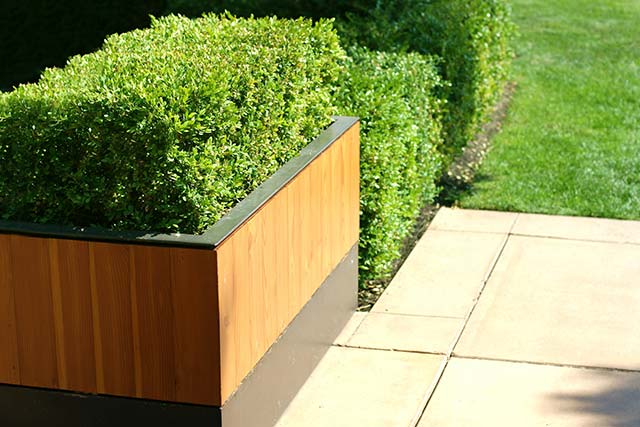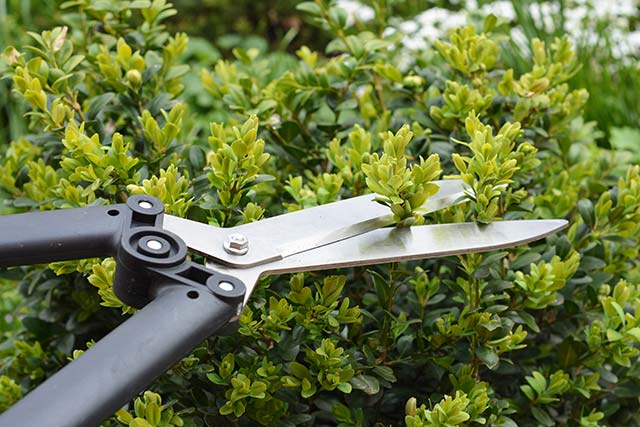Box Hedging also know as Buxus Sempervirens is one of the most commonly sold evergreen hedging species, with small, glossy dark green leaves its ideal for edging, topiary and formal hedges.
Choose from our most popular varieties of Box Hedging plants, available in a range of sizes and root types.
Box hedge is a dense, slow growing species, it has small glossy green leaves and a compact growing habit, which makes it ideal for formal hedges and topiary.
Growth rate: Slow 10-20cm per year
Overall height: Small up to 3 metres
Position: Sheltered
Root Types: Bare Root, Pot Grown, Root Balled
To learn more about Box Hedging, take a look at our helpful Hedging Guides & FAQ's
Our team are on hand to help answer your questions!
info@hedgingplantsdirect.co.uk
Opening times
Monday - Friday : 7:30am - 4:30pm
Saturday & Sunday: 10am - 2pm
We are also open 10am to 2pm on bank holidays
Box hedge, scientifically known as Buxus sempervirens, is a classic choice for hedging in many garden designs across the globe.
Buxus hedges are revered for their small, vibrant green leaves, and compact growing habit, these plants offer both beauty and practicality. They create a dense and lush barrier, adding elegance and structure to any landscape.
The slow growth of common box, while requiring patient cultivation, ensures precise control over their height and shape, making them ideal for small hedge applications, such as topiary and formal borders.
Whether you're seeking to edge a garden, create a natural privacy screen, or craft a topiary masterpiece, box hedges offer a flexible and enduring option.
Box hedge is considered as slow growing, with a growth rate of 10-20cm per year.
While this may seem like a disadvantage, it actually allows for better precision and control over the height and shape of the hedge.
This slow growth rate also means less frequent pruning, trimming and maintenance, making box hedges an ideal choice for busy gardeners.

Box hedging plants are available as bare root, root balled and pot grown plants, each with their own advantages.

Bare Root plants present an economical option for gardeners. These individual plants rely on nature's cycle, as they are field-grown, then harvested when dormant, typically from late autumn to early spring. They are sold without any soil around their bare roots, which leads to their name 'bare root'. It's important to plant them quickly to prevent the roots from drying out. Despite the extra care needed initially, they can offer robust growth and provide an excellent hedge at a lower cost than other types.

Pot grown box hedging plants are cultivated in containers, making them available for purchase and planting all year round.
They offer flexibility in planting times and generally establish quickly due to well-developed root systems. These plants require proper watering and care to thrive and are an ideal choice for gardeners desiring immediate impact and structure in their garden.

Root ball box hedging is an excellent option for those seeking an economical yet efficient solution.
These individual root balls are grown in fields, then dug up with a ball of soil around the roots, which helps them establish quickly in new ground. Ideal for large-scale plantings, root ball box hedging is typically available from autumn to spring, when the plants are dormant, ensuring a successful transplantation.

If you're looking to make an immediate impact with your garden design, Instant Box Hedging Plants can provide the solution. These common box plants are grown in troughs and are often larger, with a fully-formed structure that offers an instantly mature, established look.
Despite the higher initial cost, instant box hedging saves time and effort in growing and shaping, making them a popular choice for those who want immediate aesthetic appeal and privacy.

Planting a box hedge effectively requires knowledge and precision. This guide provides practical tips on planting times, soil preparation, hedge spacing, watering, and subsequent care to help you establish a lush and healthy box hedge.
For a step by step process and further information on how to plant a box hedge, please see our comprehensive hedge planting guide.
The best time to plant box hedge is during autumn or early spring, while the plants are still dormant. This allows them to establish strong root systems before the growing season.
When planting box hedges, each plant should be spaced approximatley 30-40cm apart. However, the planting density can depend on both the root type and size of the plant.
Please refer to our Box Hedge spacing chart below which contains the correct planting spacing and distances for each root type and plant size.
Box hedges thrive in partial sun and full sun, or in sheltered areas with well-drained, slightly acidic soil. However, they will tolerate different soil types and full sun. As long as the soil is moist, well-drained, and fertile, your box hedge will flourish.
Young plants require regular watering until they are established. Once established, they only need supplementary watering during prolonged dry periods.
To maintain a clean, well-shaped box hedge, regular pruning is essential. The following section provides tips and guidelines on the best practices for pruning box hedging, ensuring it remains healthy and beautiful throughout the year.
The best time to prune a box hedge is in late spring or early summer. This will allow the plant enough time to grow and develop new growth before the winter months.

Pruning box is relatively easy, and only requires a pair of sharp, clean shears or hedge clippers.
The two most common box hedge problems in the UK which can affect the health of your hedge include box blight disease and box caterpillar.
Please read our guide on Box Hedge Problems, Pests and Diseases to learn how to identify and prevent problems with early detection and treatment of box blight and box caterpillar.
Box blight is a fungal disease that causes defoliation and dieback in box plants. Preventative measures include planting healthy plants, ensuring good air circulation around the hedge, and avoiding overhead watering. If your hedge shows signs of box blight, remove all affected parts immediately to prevent the spread of infection.
Box caterpillars are small green larvae that feed on box leaves, causing severe defoliation if left untreated. To control box caterpillars, prune affected areas as soon as possible or use an insecticide specifically designed for this pest.
One of the best alternatives to box hedge plants is Euonymus Japonicus Green Spire, which produces small, glossy green leaves and can be easily shaped into a hedge or topiary.
For a comprehensive list of alternative box hedge species please read our guide on choosing an alternative to box.
Young common box hedges will require frequent watering until they become established. After that, they only need to be watered during prolonged dry periods.
It's essential to monitor the soil moisture levels year round and avoid over-watering, as this can lead to root rot.
Yes, box is excellent for hedges. It's a versatile and resilient evergreen, renowned for its dense, lush foliage, slow growth rate, and low-maintenance requirements. It's ideal for formal garden designs, topiary, or simply as a beautiful, year round green barrier.